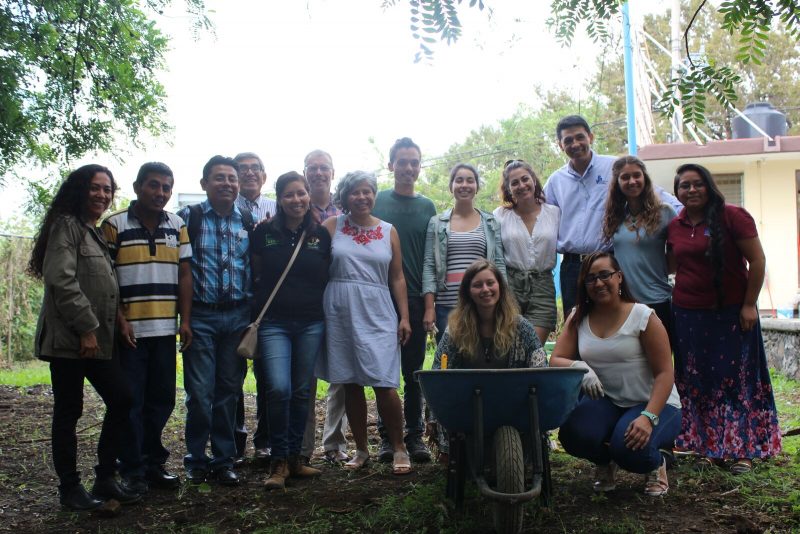English follows
Por Gisela Frias y Luisa Montes
La educación superior posee el potencial y la responsabilidad de ofrecer soluciones a los retos ambientales y sociales a nivel local y global; iniciativas en todo el mundo buscan disminuir la huella ecológica de sus planteles, ambientalizando su currículo y apoyando la investigación para la sustentabilidad. La tecnología y la innovación son herramientas importantes hacia la sustentabilidad. Empero, la UPN y la Preparatoria Comunitaria de Tres Marías demuestran que las tradiciones y costumbres de la comunidad tienen mucho que aportar.
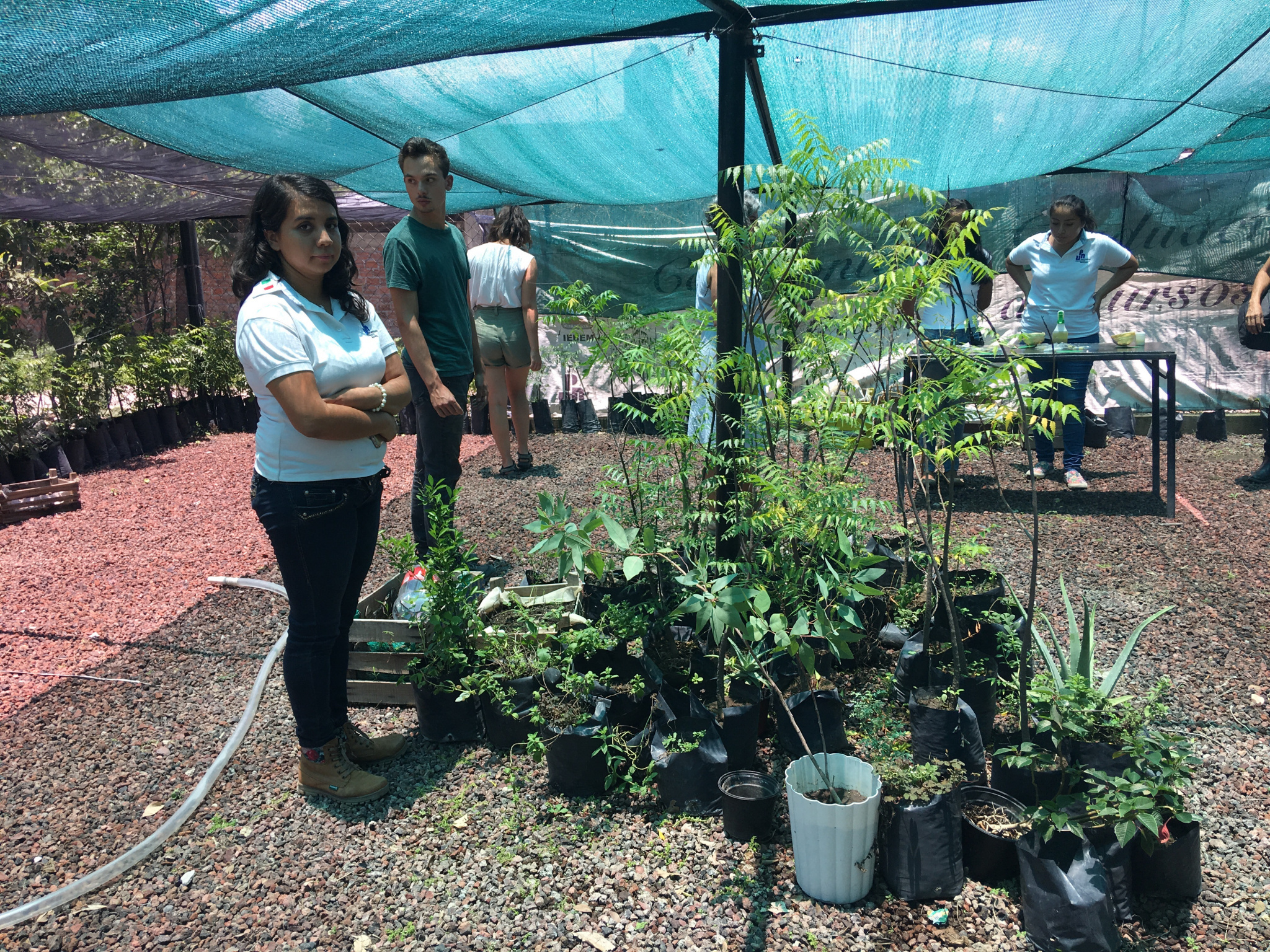
En UPN Galeana, el Jardín por la salud es un huerto de plantas medicinales; los estudiantes rescataron el conocimiento local sobre su uso tradicional realizando consultas puerta por puerta en la comunidad para aprender y aplicar el conocimiento obtenido. Mediante talleres aprendieron a transformar estas plantas en productos medicinales. Así, rescataron y valoraron conocimientos tradicionales, fortalecieron el vínculo escuela/sociedad y aportaron a la sustentabilidad en su plantel proporcionando alternativas de salud para su comunidad.
En la Preparatoria Comunitaria de Tres Marías los estudiantes investigaron sobre las plantas medicinales de su comunidad entrevistando y encuestando a la gente mayor para rescatar este conocimiento y hacerlo propio aprendiendo a reconocerlas, cuidarlas y valorar sus propiedades. Sistematizaron resultados integrando un botiquín y un manual de uso; la siguiente etapa será distribuirlos en la comunidad fomentando la valoración, cuidado y conservación del patrimonio natural.
La UPN Ayala demuestra que un plantel educativo sustentable no solo abre sus puertas a la comunidad, sino se une a ella para aprender y actuar colaborativamente.
En Tenextepango, estudiantes de la UPN Ayala trabajaron colaborativamente con la comunidad para instaurar la “casa ejidal de la cultura” donde se dedican a rescatar y valorar la tradición de la Milpa, impulsan actividades vinculadas al desarrollo cultural de la comunidad, principalmente acciones agrícolas y técnicas de permacultura demostrando que el conocimiento empírico y científico sumados a la tradición, aportan herramientas y desarrollan habilidades para construir espacios que promuevan la biodiversidad, la seguridad y soberanía alimenticia y un ambiente de pertenencia, respeto y paz.

En la comunidad de Huitchila, estudiantes de UPN Ayala impulsan el trabajo colectivo en un grupo de mujeres llamado “La Esperanza” para conocer, valorar y utilizar el patrimonio natural favoreciendo su bienestar y el de la comunidad. El grupo ha accedido a recursos para la salud donde los servicios médicos son escasos. Esto motiva la cultura ambiental en un sector poblacional carente de vías formales de educación ambiental.
La Preparatoria Comunitaria de Tres Marías ha explorado la aplicación de eco-tecnologías incluyendo prácticas modernas y prácticas tradicionales. El reto es construir un aula que respete el medio ambiente y reduzca la huella ecológica. Esta construcción es una lección de sustentabilidad porque implica un menor impacto ambiental y está basada en el rescate y valoración de tradiciones locales, aprendizajes aplicados, concientización ambiental y fortalecimiento del trabajo colectivo.
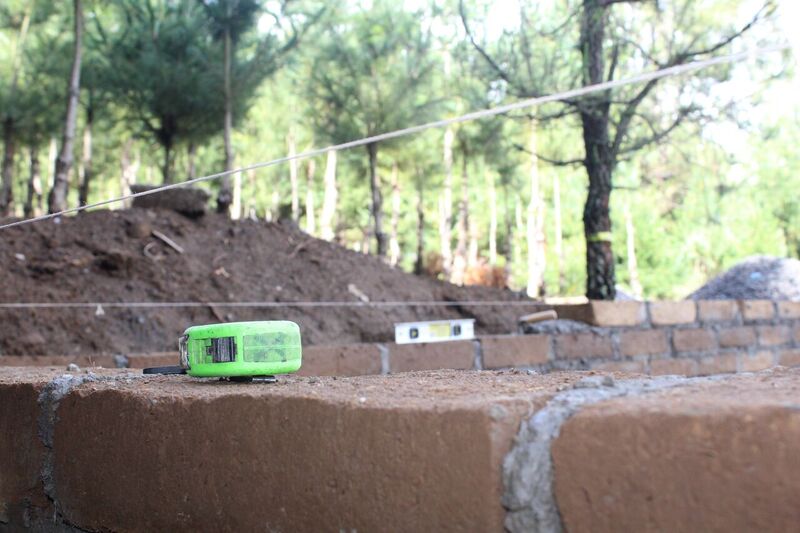
Buscaron alternativas de construcción considerando el ciclo de vida de los materiales utilizados, su proceso de fabricación y su impacto ambiental. Procuraron utilizar el mínimo de recursos (naturales y económicos) nocivos para el medio ambiente, para ello, acudieron a Don Rene Tepanuaya, originario de Tlayacapan, quien les compartió el saber y el arte de hacer adobes, un tipo de ladrillo que no requiere cocción, está hecho de una masa de arcilla y arena, mezclado con paja, moldeada en forma de ladrillo y secada al sol. Hacer adobes y usarlos para la construcción de viviendas es parte del patrimonio cultural mexicano que enfrenta una amenaza de extinción.
En una era de innovaciones tecnológicas, estos proyectos demuestran que la ciencia y la tradición pueden ir de la mano y que el patrimonio cultural y las prácticas tradicionales siguen pertinentes y vigentes como alternativas de futuro.
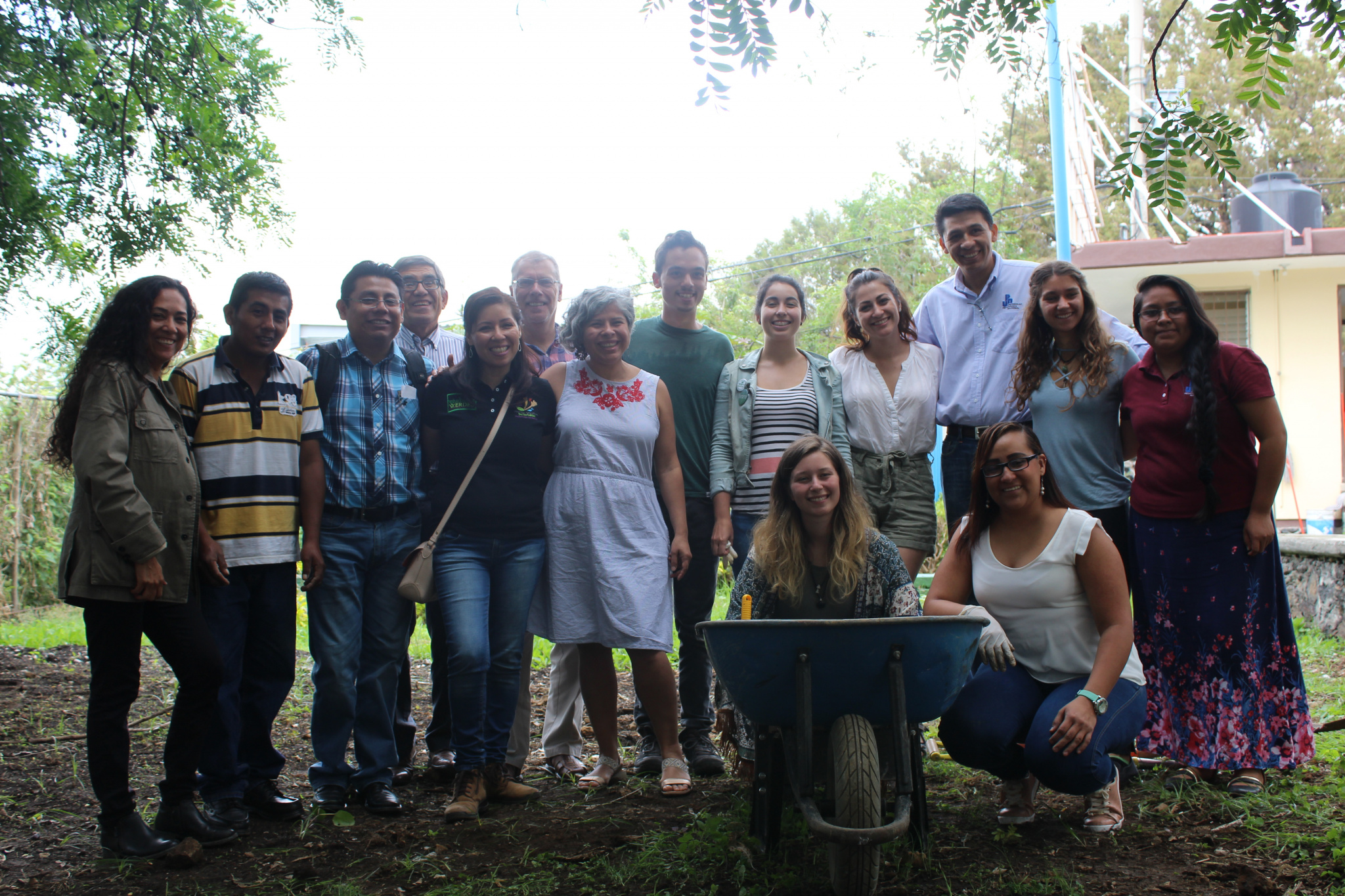
Tradition and Sustainability
By Gisela Frias and Luisa Montes
Higher education has the potential and the responsibility to offer solutions to environmental and social challenges at a local and global level; initiatives around the world seek to reduce the ecological footprint of their campuses, “greening” their curriculum and supporting research for sustainability ”
“Technology and innovation are important tools towards sustainability. However, the UPN and the Preparatoria Comunitaria de Tres Marías show that the traditions and customs of the community have much to contribute “.
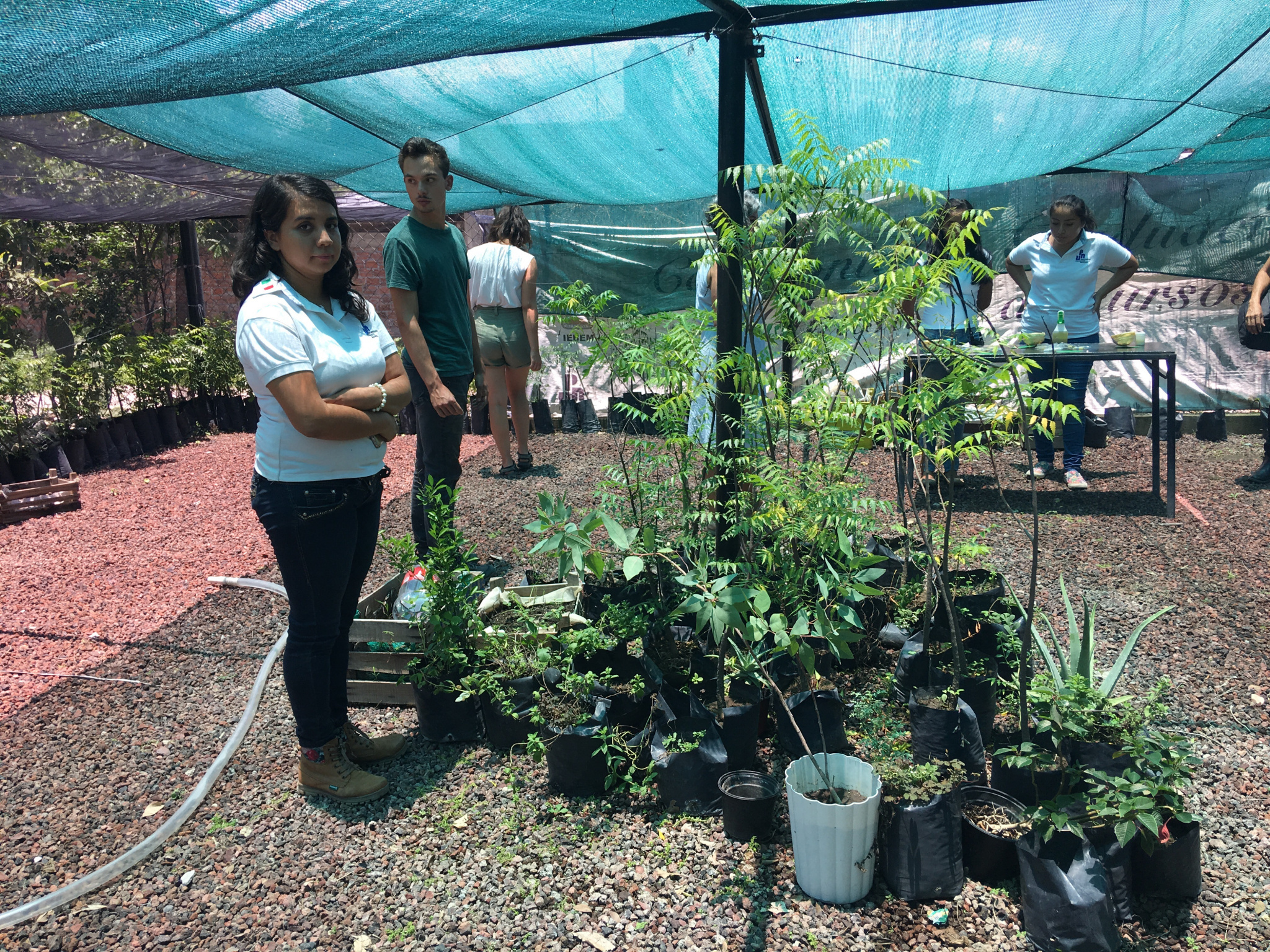
At the UPN Galeana, the “Health garden” is a medicinal plants’ garden; the students rescued local knowledge about their traditional use by conducting door-to-door interviews in the community to learn and apply the knowledge gained. Through workshops they learned how to transform these plants into medicinal products. They rescued and valued traditional knowledge, strengthened the link between school and society and contributed to the sustainability of their campus by providing health alternatives for their community.
At the Preparatoria Comunitaria de Tres Marías, students researched the medicinal plants of their community by interviewing and surveying elders to rescue this knowledge and make it their own, by learning to recognize them, take care of them and value their properties. They systematized results integrating a first aid kit and a user manual; The next step will be to distribute them in the community, promoting to value, care and the conservation of the natural heritage.
The UPN Ayala demonstrates that a sustainable campus not only opens its doors to the community, but joins it to learn and act collaboratively.
In Tenextepango, students from the UPN Ayala worked collaboratively with the community to establish the “ejido house of culture” where they dedicate themselves to rescue and value the tradition of the “Milpa”, promote activities linked to the cultural development of the community, mainly agricultural actions and permaculture techniques demonstrating that empirical and scientific knowledge added to tradition, provide tools and develop skills to build spaces that promote biodiversity, food security and sovereignty and an environment of belonging, respect and peace.

In the community of Huitchila, students from the UPN Ayala promote collective work in a group of women called “La Esperanza” to know, value and use the natural heritage, favoring their well-being and the community’s. The group has accessed health resources where medical services are scarce. This motivates environmental culture in a population sector lacking formal environmental education.
The Preparatoria Comunitaria de Tres Marías has explored the application of bio-technologies including modern practices and traditional practices. The challenge is to build a classroom that respects the environment and reduces the ecological footprint. This construction is a sustainability lesson because it implies a lower environmental impact and is based on the rescue and appreciation of local traditions, applied learning, environmental awareness and the strengthening of collective work.

They looked for construction alternatives considering the life cycle of the materials used, their manufacturing process and their environmental impact. They tried to use the minimum of resources (natural and economic) harmful to the environment, for this, they went to Don Rene Tepanuaya, originally from Tlayacapan, who shared the knowledge and the art of making adobes, a type of brick that does not require cooking, is made of a mass of clay and sand, mixed with straw, molded in the shape of brick and dried in the sun. Making adobes and using them for the construction of houses is part of the Mexican cultural heritage that faces a threat of extinction.
In an era of technological innovations, these projects show that science and tradition can go hand in hand and that cultural heritage and that traditional practices remain relevant and valid as alternatives for the future.

